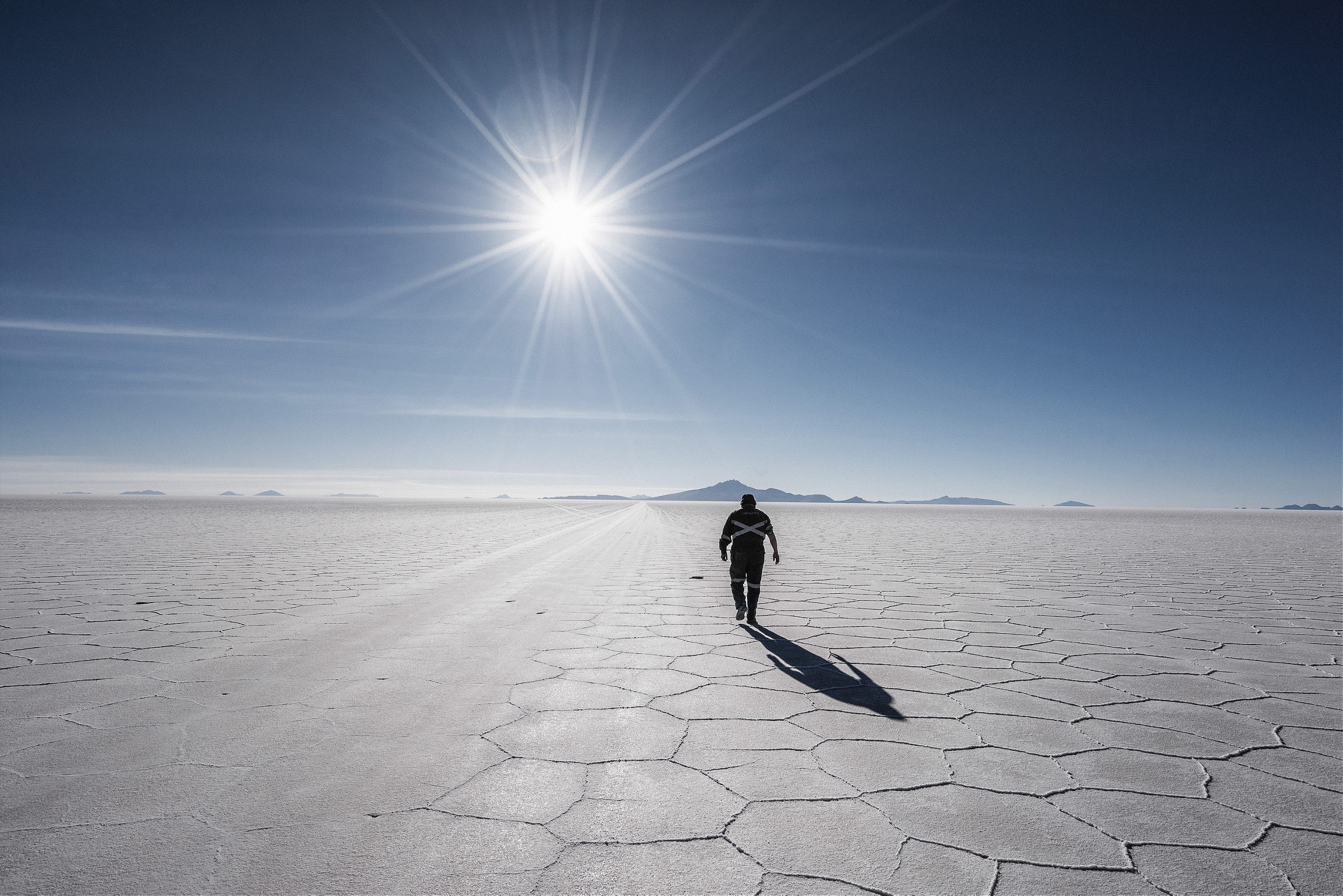In Southwest Bolivia, the world’s largest salt flats are a source of beauty, money, and misery.
I met Theo in the town of Uyuni in southwest Bolivia. He was chewing coca leaves in a dark bar on an cold April evening and we began chatting as we shared a propane heater, and a beer or two. Things move slowly in Uyuni, and during the week, only a few backpackers and local miners frequent this place. Theo told me he had been conducting tours of the nearby salt flats, the Salar, for over 15 years. We made plans to meet the next day for him to show me around. “Just bring you and your camera” he said, disappearing into the night.
The town of Uyuni is home to 10,000 inhabitants and sits 12,000 feet above sea level. Formerly a railway junction for the once thriving silver mining industry, it was founded in 1890 as a trading post, and soon became a major railroad junction between the Bolivian mines to the east and the ports of Chile to the west. The Cerro Ricco mountain still has the largest silver deposits in the world, but when the mining industry collapsed in the 1940s, the trains were disbanded and places like Uyuni became ghost towns. But it had another resource: the largest salt flats in the world.

Theo was a miner. But he had made enough money to buy a truck and “get out from inside of the mountain.” The next morning, I sat in the passenger seat of his green SUV, his windscreen adorned with dangling silk tassels the color of the Bolivian flag. As we left the dusty market town, we passed a rusting line of steam trains that were used in the late 19th century to transport ore from the silver mines to the Pacific Ocean. The grand old machines, symbols of a bygone era of the silver boom, sat sinking slowly into the desert.
Uyuni is estimated to contain 10 billion tons of salt
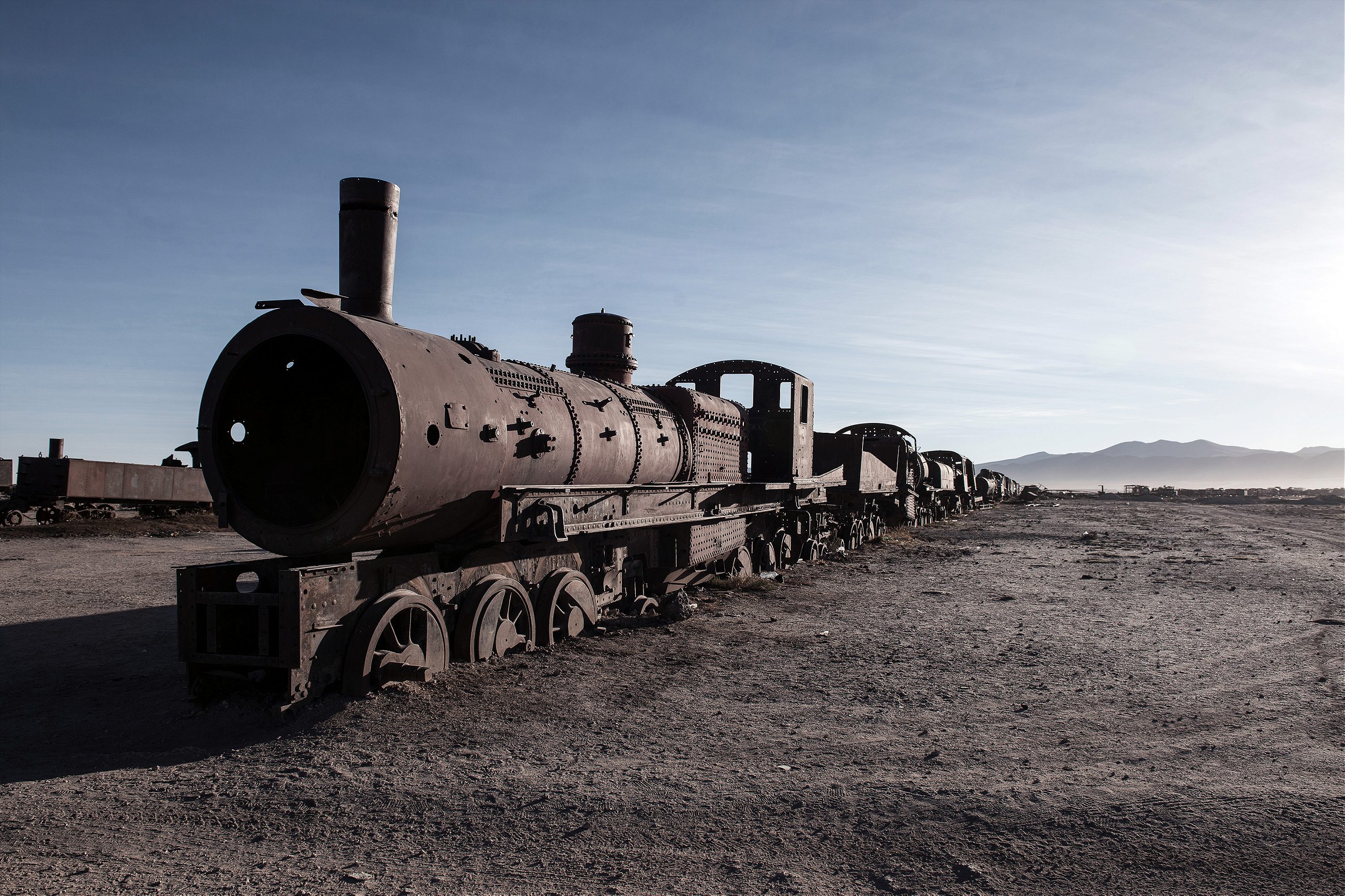
Our first stop was a group of low white buildings that, on closer inspection, were all made of salt. This was the Colchani cooperative. Inside, salt is bagged and sealed to be sold to markets throughout the world. Salar de Uyuni is estimated to contain 10 billion tons of salt, of which less than 25,000 tons are extracted annually. In the distance, symmetrical piles of the slightly pinkish material piled into large pyramids sat on the vast sun-bleached wilderness. We continued to drive towards an endless horizon. The only sound I could hear came from the tires crackling over the salt.
The result of transformations between several prehistoric lakes, the Salar is covered by a layer of salt crust that is several meters thick. It has been a source of household salt for years, but today, it’s above all a tourist magnet. After years of neglect, investment in the tourism sector is on the rise. The government plans to spend $400 million over the next few years to turn Bolivia into a top destination. According to the Financial Times, 50,000 tourists visited the Salar de Uyuni from Asia alone in 2014, up from 1,900 in 2011. More than 30,000 of them were Japanese. In the next few days, over 500 vehicles will drive through the Salar as part of the world-famous Dakar Rally, a two-week race now held through Argentina, Chile and Bolivia that brings with it tens of thousands of visitors.
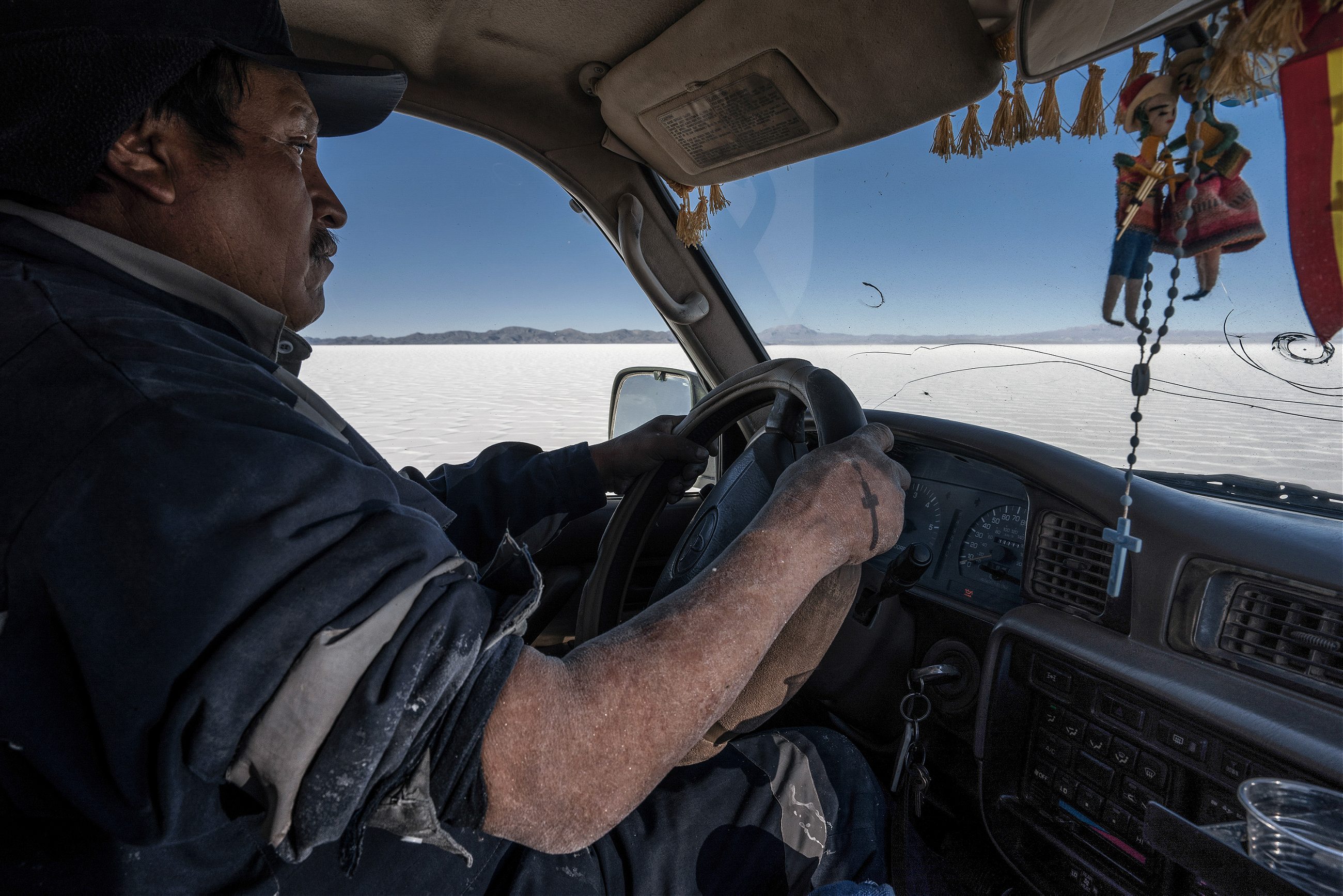
The route over the salt plains was almost blinding. In the distance, the rocky outline of the jagged mountain slowly revealed itself the further we pushed on. The outcrop got larger until we were only a couple of miles from the plain’s edge, a place where the green verdant hills of the surrounding mountains meet the flats. It was here in shallow pools that we saw our first flamingos, though very much in the distance. Theo pulled up, and announced it was time to eat. He opened the back hatch and proceeded to set up a picnic that consisted of goat cheese and green leaf sandwiches, fruit and strong local coffee, with more coca leaves for desert. While we ate, he pointed to the mountains and spoke of the pre-Columbian mummies that lay at the foot of El Thunupa, the towering ancient volcano.
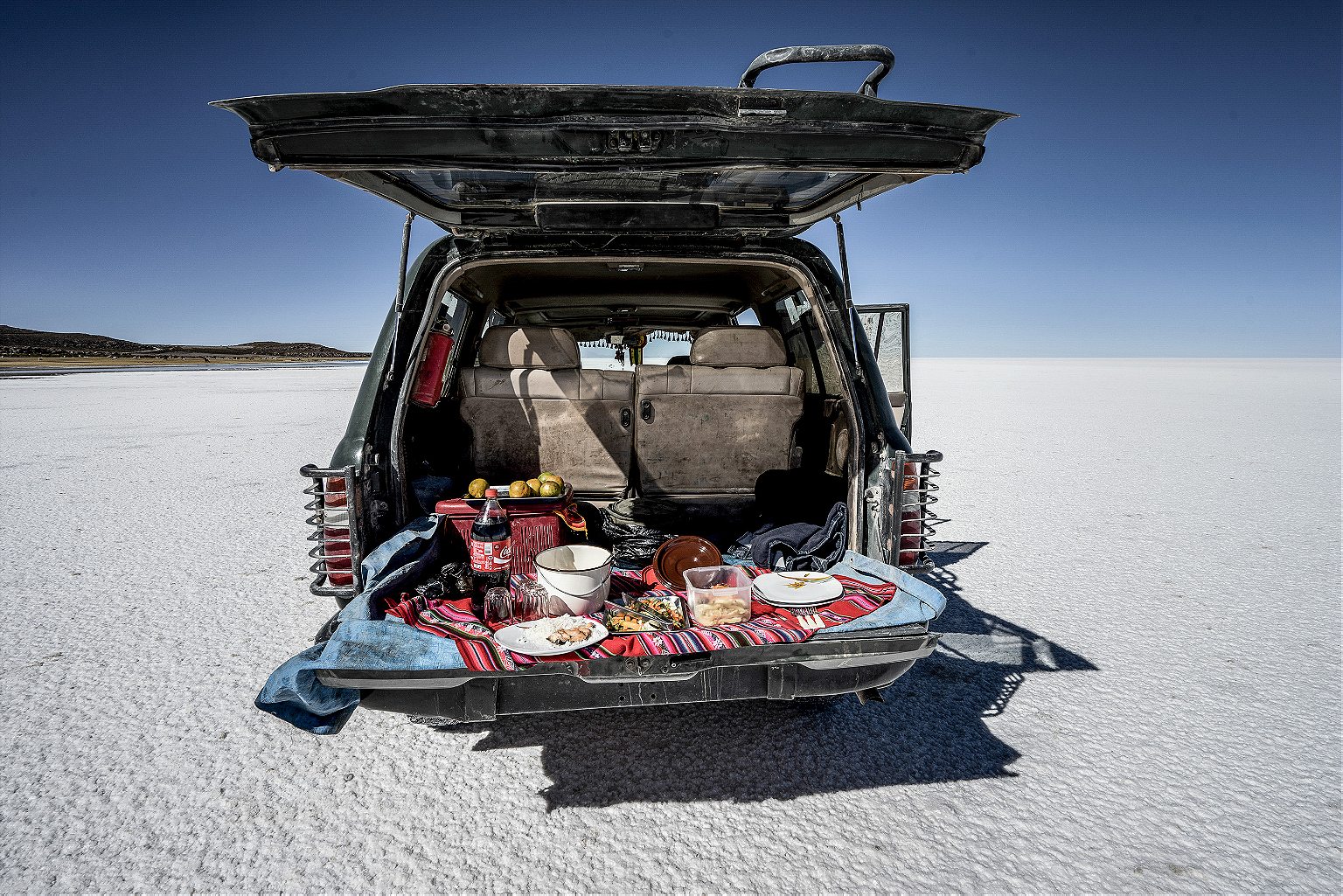
After our picnic, we drove up a craggy mountain path and walked slowly through the volcanic rock, passing enormous pillars of cactus silhouetted against the white sea plain below. According to Theo, the caves were discovered only 30 years ago, and the finely preserved skeleton remains have never been moved. It took a moment for our eyes to adjust, but I made out the crumpled skeleton of an ancient figure sitting with a few possessions that had been placed around him.
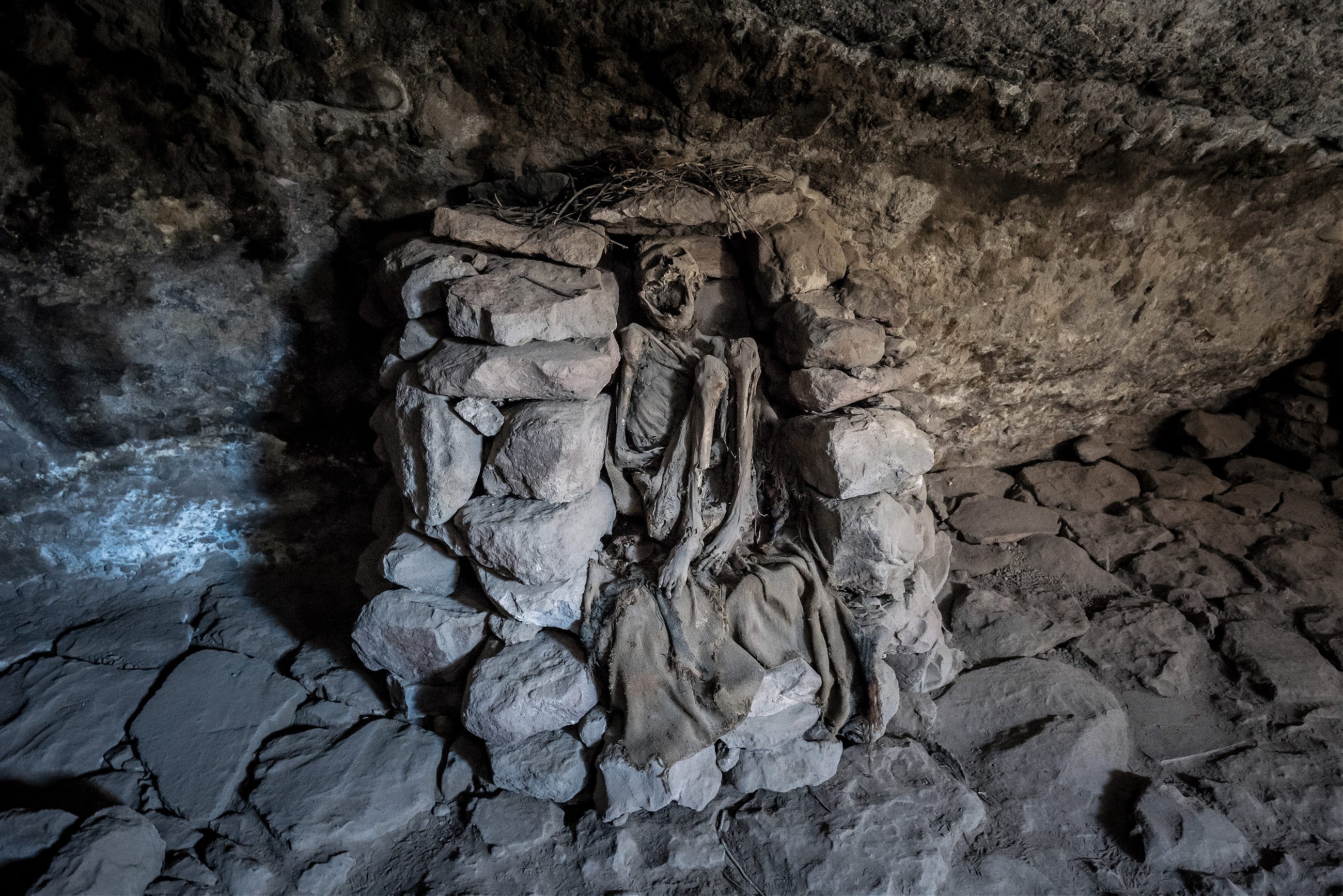
As we wound our way back down and towards Uyuni, the sun was setting behind us. But Theo was focused on the salt. Slowing down, he began to murmur to himself. “Crystals amigo” he said, turning off the engine. “Let’s go!” He rolled up his sleeve to the elbow and walked off into the distance, looking down on both sides of the faint tracks we had made just a minute before. He knelt down, stood back up and, with one of his heavy boots, stamped a hole into the salt crust until he could access the salty water below. Laying down on the surrounding crust, he buried his bare arm in the freezing brine and pulled out a magnificent crystalline rock formation that weighed perhaps two or three kilos.
“I give them to my family who then sell them on the market in Uyuni,” he explained. “For this one, we can get maybe $15.” He headed in a completely different direction and began his sensory hunting process all over again. An hour later we were back in the truck with the back seat covered in fine crystals. Theo wiped his salty arm, and dug back into his coca leaf bag as he turned on the engine, driving the final leg back to Uyuni.
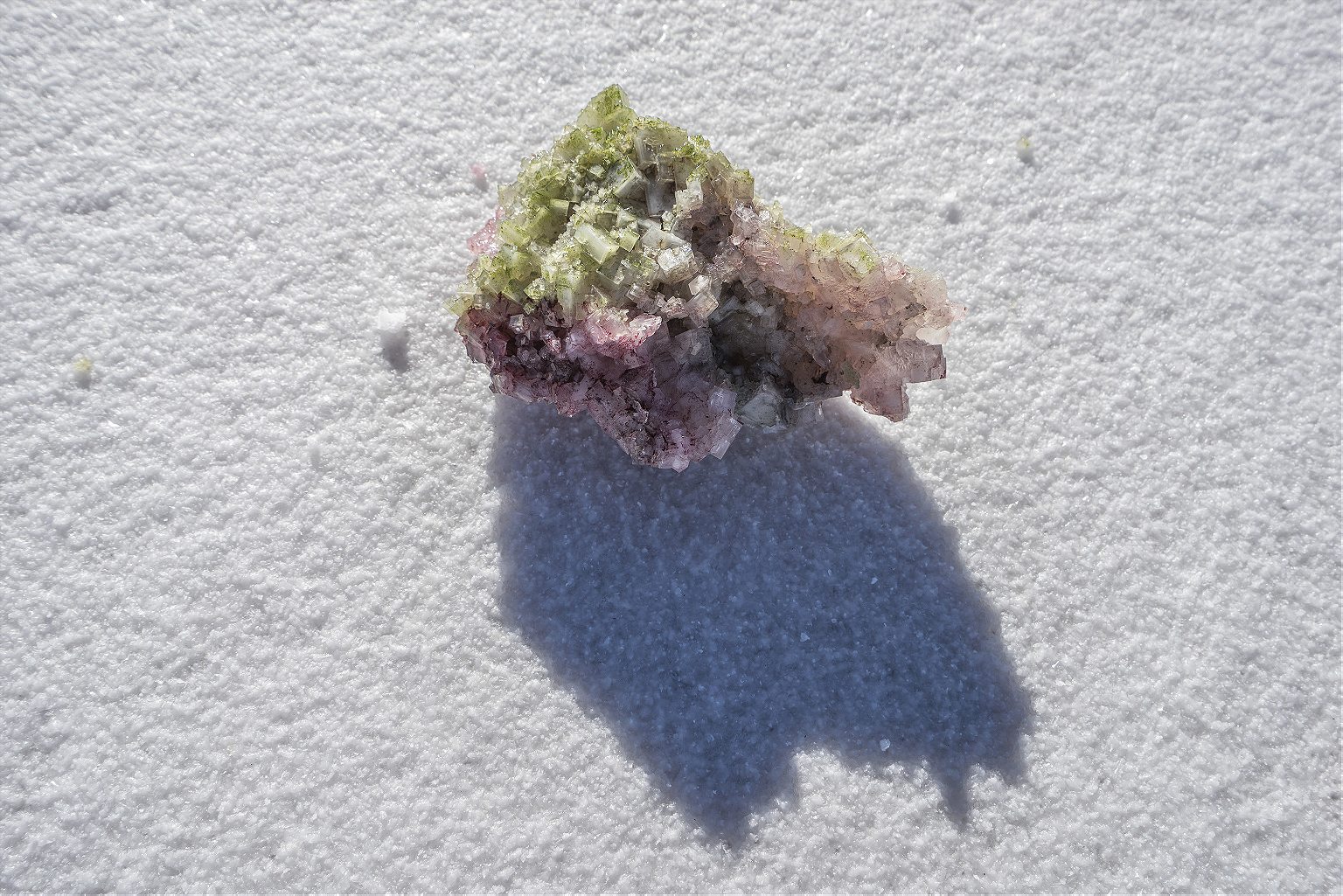
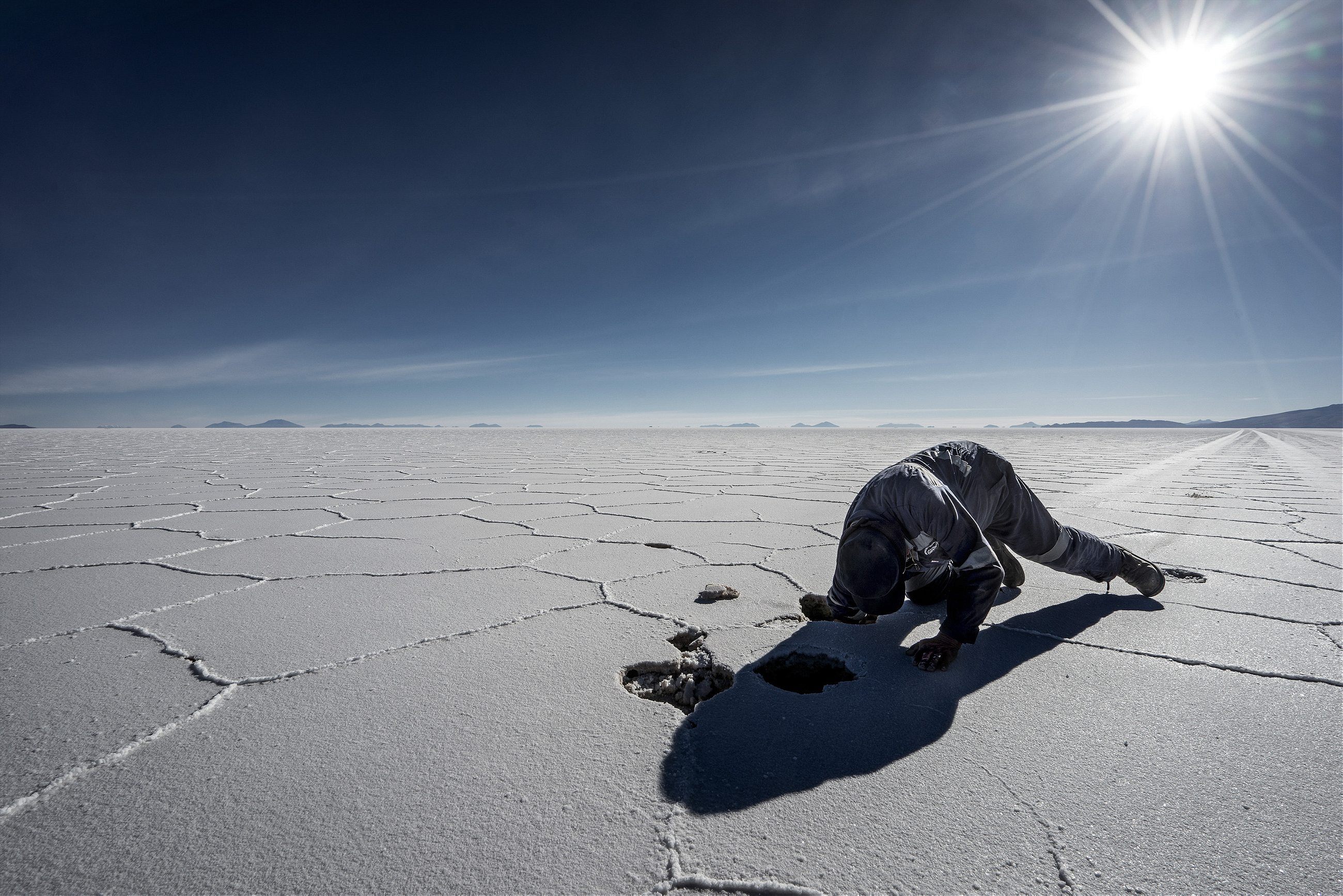
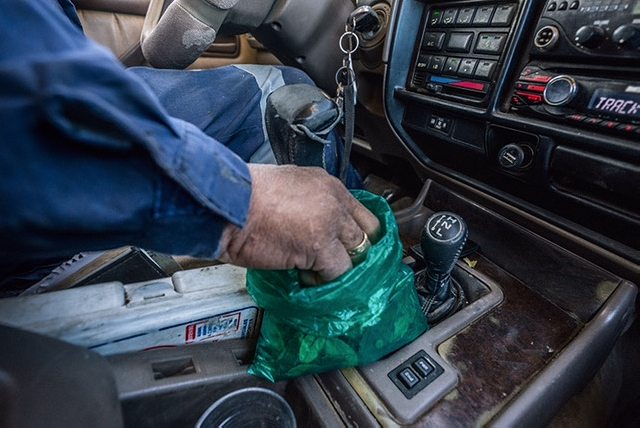
For Theo, these salt crystals provide a little extra income when times get hard. But he’s not the only one looking for treasures under the Salar; an estimated 50 percent of the world’s supply of lithium lies beneath the crust. Some economists predict that one day, every car, computer and electronic device will be fueled by lithium, leading some Bolivians to claim their country will become the “Saudi Arabia of lithium.”
For now, it’s still up to president Evo Morales and his government to decide how to develop this nascent industry. But contracts have already been signed with German and Chinese technology companies, and heavy vehicles, toxic residues and major power lines will all be part of the landscape when operations begin in 2018.
